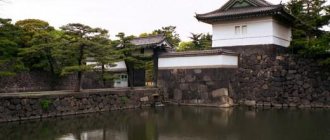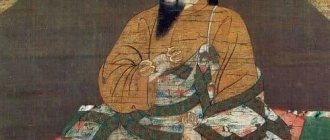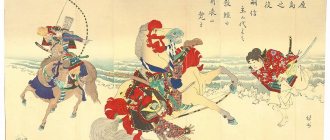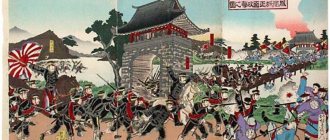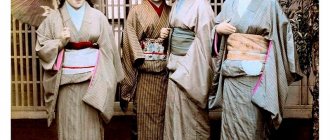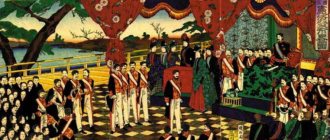Of all the states of the Far East, it is Japan that has always aroused the greatest interest among adventurers and historians around the world. For a long time, this state was just a myth that people retold to each other. However, when the discovery of Japan took place, the fairy tale turned into reality. It should be noted that the history of this country is rich and interesting. Japan occupies a significant place in the world because it is the source of a completely unique culture. In addition, this state is quite strong, politically and economically. This characteristic has been formed over several centuries. Moreover, we can safely say that the strong features of the Japanese state were forged in the heat of numerous battles. However, Japan was not always so powerful. History knows the moment when the land of the rising sun was completely closed from the outside world. This period lasted several centuries, but it was brought to an end, which led to the economic evolution of Japan and the enlightenment of its nation.
Creation of the Tokugawa Shogunate
Tokugawa Ieyasu became the all-Japanese leader after the death of Toyotomi Hideyoshi. His lands were located in the Kanto region, with Edo Castle as its center. In 1600, with the support of samurai landowners, Tokugawa defeated the opposition of Western Japanese daimyo under the leadership of Ishida Mitsunari at the Battle of Sekigahara.
Help with student work on the topic of the Third Shogunate and the policy of “isolation” in Japan
Coursework 490 ₽ Essay 280 ₽ Test paper 210 ₽
Get completed work or consultation with a specialist on your educational project Find out the cost
In 1603, Ieyasu received the post of shogun - conqueror of barbarians - from the emperor and created a new shogunate with its center in Edo. In 1615, he finally liquidated the family of the former overlord Toyotomi and established the power of his government. The time of his reign is called the Edo period (1603-1867).
The power of the shogunate rested on vassals, as well as on directly controlled possessions, which made up one quarter of all the lands of Japan. The government had monopoly rights in foreign policy and coinage.
Links[edit]
- [1]
- Gunn, Geoffrey C (2003), The First Globalization: Eurasian Exchange, 1500–1800
, p. 151, ISBN 9780742526624 - ^ a b
Tashiro, Kazui.
"International Relations in the Edo Period:
Sakoku
Revisited . "
Journal of Japanese Studies
. Vol. 8, No. 2, summer 1982 - ^ a b
Tobey, Ronald (1984).
State and Diplomacy in Early Modern Japan
. Princeton: Princeton University Press. - Walworth, Arthur. Black Ships Off Japan.
New York, New York, 1946. pp. 5-6. - Toby, Ronald (1977). "Rediscovering the Sakoku Question: Diplomacy in the Legitimation of the Tokugawa Bakufu", Journal of Japanese Studies
. Seattle: Society of Japanese Studies. - Straelen, H. van (1952) Yoshida Shoin, Forerunner of the Meiji. Leiden: E. J. Brill. pp. 7–8
- ^ a b
Hellyer, Robert I. (2009).
Defining Engagement: Japan and the Global Context, 1640–1868
. Harvard University. ISBN 9780674035775. - Laver, Michael S. (2011). Sakoku Edicts and the Politics of Tokugawa Hegemony
. Cambria Press. ISBN 9781604977387. - Agence France-Presse (31 January 2009). "South Korean President Faces Buddhist Protests". The Straits Times
. Archived from the original on September 4, 2008. Retrieved January 31, 2009. - 先島諸島火番盛 [Sakishima Lighthouses] (in Japanese). Agency for Cultural Affairs. Retrieved June 11, 2012.
- Hall, J (1955). Tanuma Okitsugu, 1719–1788,
p. 105. - Cullen, L. M. History of Japan, 1582–1941. Cambridge: Cambridge University Press, 2003. p. 39
- Glynn Barratt. Russia in the waters of the Pacific Ocean, 1715–1825
. UBC Press, 1981. ISBN 9780774801171. Pages 35–37. - Islands and Empires: Western Influence on the Pacific and
East
Asia
by Ernest Stanley Dodge, p.302 - Ridley, Scott (2010). Morning of Fire: John Kendrick's Daring American Odyssey in the Pacific
. HarperCollins. pp. 221–25. ISBN 978-0-06-170012-5. Retrieved July 30, 2012. - Magazine for the brig Grace (1791). Duxbury Rural and Historical Society.
- C. Jack Bauer, A Maritime History of the United States: The Role of American Seas and Waterways, University of South Carolina Press, 1988, p. 57
- John, Derby. "The Derby Family" (PDF). Peabody Essex Museum
. clause 3. Retrieved December 15, 2021. - Asiatic Society of Japan, Long Lecture. Archived March 25, 2008, at the Wayback Machine.
- Jump up
↑ Polak 2001, p. 19
Relations between the shogunate and daimyo
Samurai rulers who had lands with incomes above 10 thousand koku were called daimyo and were in a suzerain-vassal relationship with the shogun. Among the daimyo, of whom there were 300 people, a hierarchy was established according to the degree of closeness to the shogun family:
- Tokugawa relatives;
- ancient vassals;
- new vassals.
For all landowners, the government published the “Military Houses Law”, according to which daimyos without permission had no right to build castles on their lands and enter into political marriages. Daimyos who did not comply with these prohibitions were deprived of their possessions or transferred to other, less profitable regions of the country. To control the samurai feudal lords, the shogunate created a system of assignments, when the daimyo had to arrive in Edo every year and live there for a year. In addition, by order of the government, landowners had to perform construction and military duties in favor of the center. Despite this burden, the daimyo had freedom to manage their estates. These possessions were called principalities.
Are you an expert in this subject area? We invite you to become the author of the Directory Working Conditions
In addition to control over the regions, the shogunate limited the rights of the imperial court, turning it into a system dependent on the samurai government. According to the “Law on the Imperial Court and Kuge,” the shogunate was obliged to financially support the emperor, but liquidated his land holdings.
Domestic and foreign policy of the shogunate
Tokugawa Ieyasu encouraged trade. From 1604, by his order, the courts of Western daimyo and merchants of the cities of Nagasaki and Sakai, who conducted foreign trade, were required to obtain licenses - letters of approval with red seals, so that they would not be confused with pirate ships. Licensed ships traded extensively in Macau, Taiwan and various regions of Southeast Asia.
Many Japanese who went abroad settled there, forming Japanese trading colonies. At the beginning of the 17th century, the number of overseas Japanese was 10,000 people. The most famous was Yamada Nagamasa, who received a high official title from the Siamese king.
In the beginning, the shogunate promoted trade relations with Western countries and was kind to Christianity. Thanks to this, the government treasury was replenished, and the number of Japanese Christians grew. However, the confrontation between European states in the Japanese market forced the shogunate to reconsider its foreign policy course. In 1617, the shogun issued a ban on the spread and practice of Christianity, and the arrival of Spanish ships in Japan. Restrictions were gradually placed on Japanese merchant boats leaving the country. In 1635, the government prohibited Japanese from leaving Japan at all or returning if they were abroad.
Privacy issues[edit]
Many individual attempts to end Japan's isolation were made through the expansion of Western powers in the 17th, 18th, and 19th centuries. American, Russian and French ships attempted to engage with Japan but were rejected.
- In 1647, Portuguese warships attempted to enter Nagasaki. The Japanese formed a blockade of nearly 900 boats to stop the ships. Following this event, the Japanese increased security at Nagasaki as fears grew that other countries would defy the new isolation policy and attempt to enter through Nagasaki. [13]
- In 1738, a Russian naval squadron (including Martin Spangberg) visited the island of Honshu. The Russians landed in a picturesque area that is now part of Rikuchu Kaigan National Park. Despite the prevailing policy of seclusion, the sailors were treated politely, if not friendly. [14]
- In 1778, a merchant from Yakutsk named Pavel Lebedev-Lastochkin arrived in Hokkaido with a small expedition. He offered gifts and politely asked to trade in vain.
- In 1787, Jean-François de Galaup, Comte de La Pérouse sailed in Japanese waters. He visited the Ryukyu Islands and the strait between Hokkaido and Sakhalin, naming it after himself.
- In 1791, two American ships under the command of American explorer John Kendrick—The Lady Washington
,[15] under the command of Captain Kendrick, and
Grace
, under the command of Captain William Douglas—stopped for 11 days at Kiyu on Oshimu Island, south of the Kiyu Peninsula . [16] Kendrick was the first known American to visit Japan. He apparently planted an American flag and claimed the islands, although only one English language account of the voyage exists. [17] - In 1792, Russian citizen Adam Laxman visited the island of Hokkaido.
- From 1797 to 1809, several American ships traded to Nagasaki under the Dutch flag at the request of the Dutch, who were unable to send their own ships due to conflict with Britain during the Napoleonic Wars: [18] In 1797, US Captain William Robert Stewart commissioned by the Dutch from Batavia took the ship Eliza of New York
to Nagasaki, Japan, with a cargo of Dutch trade goods. - In 1803, William Robert Stewart returned aboard a ship named the Emperor of Japan (captured and renamed the Eliza New York), entered Nagasaki harbor and tried in vain to trade through the Dutch enclave of Dejima.
- Another American captain, John Derby of Salem, Massachusetts, aboard the Margaret
tried in vain to open Japan to the opium trade. [19]
, hunting Dutch shipping in the Pacific, arrived at Nagasaki under the Dutch flag and called for supplies when it discovered that its prey had already left.
The Phaeton
sailed before Japanese authorities arrived from Kyoto.
, an unarmed American merchant ship. The ship was fired upon several times and finally sailed without success.
rescued 22 shipwrecked Japanese sailors. Captain Mercator Cooper was admitted to Edo Bay, where he stayed for four days and met with the Governor of Edo and several high-ranking officers representing the Emperor. They were given several gifts and allowed to leave without being harassed, but were forbidden to return.
entered Uraga Harbor to conduct a topographical survey. The Japanese castaway, Otokichi, was on board and acted as an interpreter. To avoid problems with Japanese authorities, he disguised himself as a Chinese man and said that he had learned Japanese from his father, supposedly a businessman with ties to Nagasaki.
These largely unsuccessful attempts continued until July 8, 1853, Commodore Matthew Perry of the US Navy with four ships: Mississippi
,
Plymouth
,
Saratoga
, and
Susquehanna
pair into Edo Bay (Tokyo) and display the menacing force of their ships Peishan's Gun.
He demanded that Japan open to trade with the West. These ships became known as kurofune
, black ships.
Shimabara Rebellion and Sakoku Politics
In 1637, an uprising of Christian peasants broke out on the Shimabara Peninsula of Kyushu Island due to persecution of faith and extortions from the authorities. The leader was 15-year-old samurai Amakusa Tokisada. Frightened by the rebels' success, the shogun sent an army against them and exterminated them all the following year. These events prompted the government to speed up the implementation of its anti-Christian course. A system was established for assigning the population to Buddhist temples, according to which the Japanese were required to register in the “faith renewal journals” at the temples, and during a business trip or move to receive a certificate of membership in the Buddhist community.
In 1639, the shogunate banned Portuguese ships from arriving at Japanese ports. Only Holland, which helped suppress the Christian uprising in Shimabara, received government permission to conduct trade. The Japanese authorities transferred the Dutch trading post to an artificial island reservation in Nagasaki.
Definition 2
Sakoku was a policy of the shogunate that was aimed at limiting trade and all contact with the West, as well as prohibiting the departure of Japanese people abroad.
The main goal of the sakoku was to stabilize the power of the shogunate. Having isolated the country, the shogunate traded with Holland and Asian countries, but under close control.
Terminology[edit]
In fact, trade flourished during this period, and although relations and trade were limited to certain ports, the country was far from closed. In fact, even when the shogunate expelled the Portuguese, they simultaneously negotiated with Dutch and Korean representatives to ensure that overall trade would not be affected. [4] Thus, in recent decades, it has become increasingly common in scholarship to refer to the foreign relations policy of that period as something other than sakoku
, implying a completely isolated, isolated and "closed" country, and the term
kaikin
(海禁, "sea prohibitions"), which were used in documents of the time and derived from the similar Chinese concept of
haijin
. [6]
Relations with Korea and the Ainu
Under Ieyasu's rule, relations with Korea, interrupted due to Hideyoshi's attempts to invade it, were resumed. Korean embassies began to visit Japan frequently, introducing the islanders to Korean culture. The Japanese island of Tsushima became the center of trade. With the permission of the Korean government, the merchants of this island had a trading post in South Korean Busan.
The authorities of the Principality of Matsumae in the south of Hokkaido were engaged in trade with the Ainu tribes. The main export product of the Ainu was seafood. Since the Ainu also traded in northeast China, Chinese goods reached the Japanese through them. The Japanese did not always trade fairly, which was the reason for many Ainu uprisings. The most powerful was the performance led by Shakusyain.
— — Do you need help creating a study plan? — Specify a topic and receive a response in 15 minutes — — — — — — get help — —
Socio-cultural situation in the country
The new ruler Ieyasu began with reforms. First of all, he took up the social sphere. Then he reformed culture, religion and social activities.
Ieyasu's reforms in the social sphere:
- Streamlined the country's governance system. The shogun took the place of the emperor. Executive power was now concentrated in the hands of the minister, onto whose shoulders the duties of an adviser fell.
- He divided society into 4 classes: merchants, artisans, peasants and samurai. The dominant role in society, naturally, was occupied by samurai. The role of women in Japan in the 17th century was limited to looking after children and performing household chores. Their husbands were samurai and spent most of their lives on military campaigns.
As for the cultural development of Japan, during the reign of the Tokugawa regime, Confucian ideas began to spread in the Land of the Rising Sun under the leadership of the philosopher Zhu Xi. In addition, nationalist ideas began to strengthen in Japan. At the beginning of the 17th century, these ideas did not carry extremism and were aimed at searching for national self-identification. From peaceful nationalist ideas in the 18th century, they developed into a theory of Japanese superiority over the Chinese and Koreans.
A rather interesting doctrine that appeared in the 17th century is the shingaku ethics, thanks to which the modern mentality of the Japanese was formed. It has become something like every Japanese's own ideology. Then they believed that one could achieve one’s own well-being only through hard work, frugality and personal intelligence. In addition, in Japan the search for national self-identification continued in the cultural sphere. Cultural figures studied national ancient monuments, explored the history and spiritual culture of their people. Passion for one's own culture led to the emergence of the Koku-Gaku school, which advocated the search for national identity.
